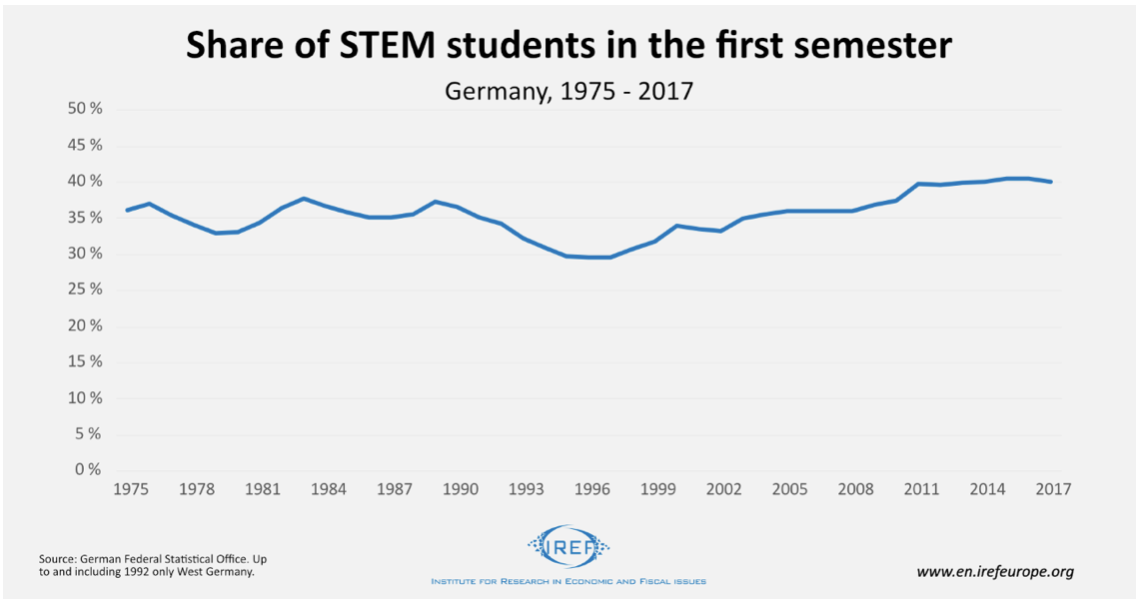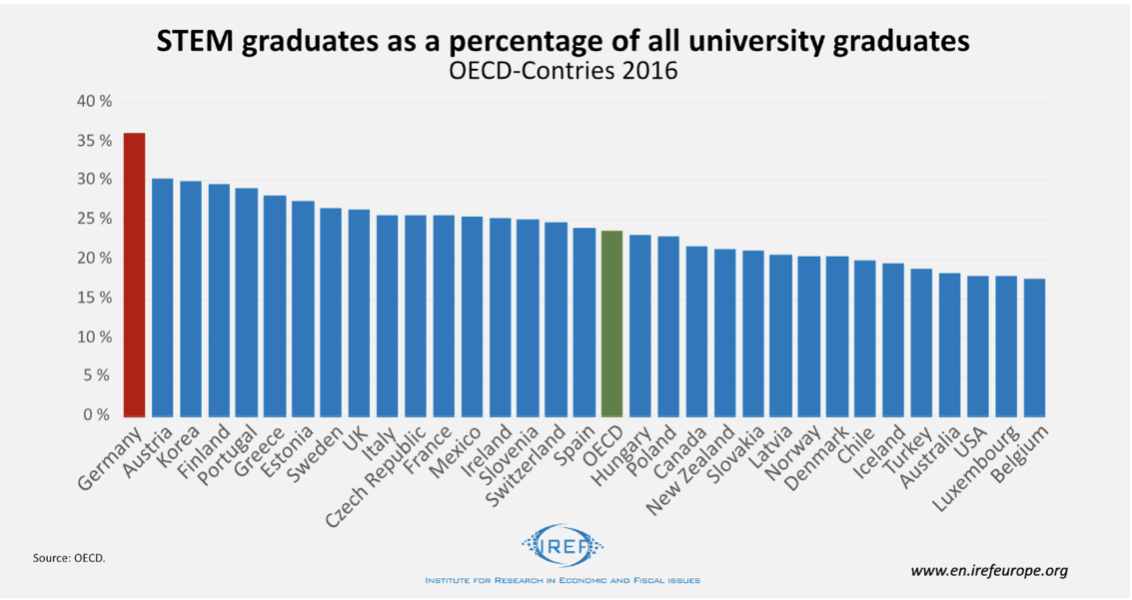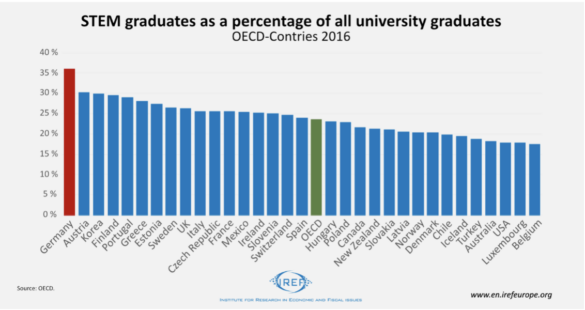German chancellor Angela Merkel recently expressed concerns over Germany’s and Europe’s technological competitiveness. Others voiced doubts about Germany’s tech future, too. One of the reasons mentioned more frequently to justify this pessimism is the shortage of skilled labour. As a result, calls for more students in STEM subjects – those pursuing degrees in science, technology, engineering and mathematics – have become louder. In fact, the ratio of STEM students in Germany has risen significantly since the turn of the millennium, and the percentage of graduates with a STEM degree is relatively high by international standards. This justifies optimism, because STEM graduates benefit from their own skills, and also because they generate positive external effects.
STEM promotes higher productivity and innovation
Academic research has shown that if a region is particularly rich in engineers, computer scientists or natural scientists, innovative capacity rises, and the rest of the local workforce benefits from higher wages. John V. Winters has examined the external effect of STEM graduates on wages in their metropolitan areas. Compared to graduates of other degree programmes, their positive impact on other workers’ wages is significantly higher. Giovanni Peri et al. reach a similar conclusion in a paper from 2015: Increases in the number of foreign STEM employees in a particular region is associated with a significant rise in wages of the natives with and without university degrees. According to another paper from 2015, the number of STEM graduates also positively influences the number of patents per resident, while non-STEM graduates do not influence regions and countries in this way.
STEM studies: 90s flop, since 2000 (again) top
The call for more STEM students in Germany is understandable in light of the research results from the US. But how popular are the German STEM curricula – compared intertemporally and internationally?
Data by the German Federal Statistical Office from 1975 to 2017 shows the percentage of STEM students in their first semester in relation to all registered freshmen. The share was 37.3% in 1989, but by 1997 it was down to 29.6%.

Since the turn of the millennium, however, the tide has turned. In the 2015/2016 winter term, the percentage of STEM students reached 40.5% and has stayed constant ever since. Once again, STEM subjects have become the most popular group of subjects among the 878,000 new students at university level. While about 322,000 young people pursued economic, social or legal studies, 351,000 students were taught in STEM subjects.
High international STEM percentages

The OECD provides data about the percentage of STEM graduates of all member states. Germany is at the top of this statistic.
In 2016, the most recent available year, 36% of graduates in Germany came from STEM; in France, this only applied to 26%. The UK also exhibited 26% STEM graduates, which is still above the OECD average of 24%. In the US, STEM students only made up 18% of all graduates.
The percentage of the population with tertiary degrees is low
The high percentage of STEM students in Germany, however, is accompanied by a comparatively low percentage of people with tertiary education. According to the OECD, in 2017 31.3% of all 25-34 year-olds in Germany had received a degree from a university, polytechnic, or similar form of higher education. The OECD average is much higher (44.5%). In brief, Germany has relatively many STEM students, but relatively few students overall. Nevertheless, having low student percentages is not as bad as it seems, due to possibilities of in-service training outside of higher education, which are common in German-speaking countries. Indeed, apprentices end up taking jobs that would require higher education in other countries. Put differently, Germany’s dual education system has proven successful in equipping young people with the skills necessary to perform well in competitive job markets without having to study at university level. It is reasonable to be optimistic about dual education being able to convey useful skills in a world of fast technological change, precisely because of its closeness to the job market.
The land of engineers: a reason for optimism
To conclude, Germany’s reputation as the “land of engineers” is not entirely undeserved, and recent developments offer reason to be optimistic. This does not mean that the academisation of certain jobs traditionally taken up without university degrees, as well as a stronger presence of German research facilities, would be undesirable. Nevertheless, the findings do not indicate a lack of preparation of Germany’s human capital for the technological challenges of the future.





